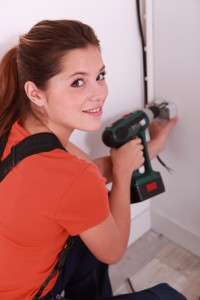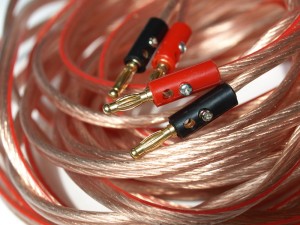Adding or upgrading a home theater can be a pricey project. Naturally, purchasers start to wonder where they should splurge and where they can save. The usual queries include how much of my budget should go to audio versus video; how much to the screen versus the projector. Once you’ve assembled your components you might start to wonder if you should save some money by installing the whole system yourself.
But is that a good idea? The answer depends on three factors. First, how complicated is your system? If you have floor standing speakers and a flat screen TV that you plan to set on a TV stand, you can probably get away with setting everything up yourself. If you want in-wall speakers and a ceiling mounted projector, a professional install might be worth your while. Second, what level of expertise do you have? If you struggle to connect your laptop to your TV, stop reading this article and call a professional installer now. If you’re an amateur handyman who can install lighting and patch drywall, keep reading. Third, do you have access to the required tools? If you don’t have a decent tool collection, you could easily spend more at the hardware store than the entire installation would have cost you.
Before you take the DIY or Professional Installation plunge, consider exactly what is involved in setting up a home theater. We have broken down the requirements for common home theater installations to help you make the decision.
Wall Mounting a Flat Screen Television
Wall mounting a TV is a doable task if you have the tools, some experience using them and friends to help you lift the TV. You also need the patience and foresight to measure twice (or thrice) before you start drilling into your walls. You don’t want an extra hole or a crooked TV.
Tools: stud finder, power drill, socket wrench bracket.
To mount a TV to a brick or concrete wall you will need sleeve anchors, hammer drill, masonry bit, ear protection, eye protection.
Floor Standing Speakers
Setting up floor standing speakers is simply a matter of positioning them correctly. Read the manual that came with your speakers to find the best placement for your room.
Wall Mounted Speakers
If you are comfortable with using a power drill to mount shelving, you can handle mounting speakers to your walls. Depending on the weight of your speakers you may need to mount them to a stud.
Tools: power drill, level, stud finder.
In-wall or In-ceiling Speakers
Installing in-wall or in-ceiling speakers is not for the first-time home improver. Only attempt this project if you are comfortable and experienced with cutting and patching drywall and wiring basic electrical appliances like lights.
Tools: stud finder, drywall saw, power drill, level.
Mounting a Projector
Mounting a projector to the ceiling doesn’t require many high-tech tools, but you will need to do some calculations. If you’re confident in your measuring and math skills, go ahead and mount the projector yourself.
Tools: mount kit, stud finder, wrench.
Projector Screen Installation
Setting up a projector screen sounds like it should be as easy as hanging a painting. Depending on the size and type of screen you have, it can be a lot more complicated than that.
Screens that snap together are pretty fool proof. Portable screens don’t require setup at all. If you have a large Velcro, tongue and groove or wrap around screen, installation becomes more complicated. Artists who have experience stretching canvas won’t have trouble securing the screen to the frame to the frame with no wrinkles. You will need a stud finder and a power drill to mount a large screen.
Concealing Cables
There’s no point in cutting into your drywall to install an in-wall speaker only to leave wires hanging outside the walls. Connecting your surround sound speakers to your receiver will require creating a path through your walls. If you are remodeling or building an addition, you can easily plan a route for all your AV wires. If you’re adding a home theater to an existing structure, you will have to do more careful drywall cutting and patching. Remember to use speaker wire that is rated CL2 or CL3 inside walls or ceilings.
Now you’re armed with information that should help you decide whether to install your home theater components yourself or call in professionals.



